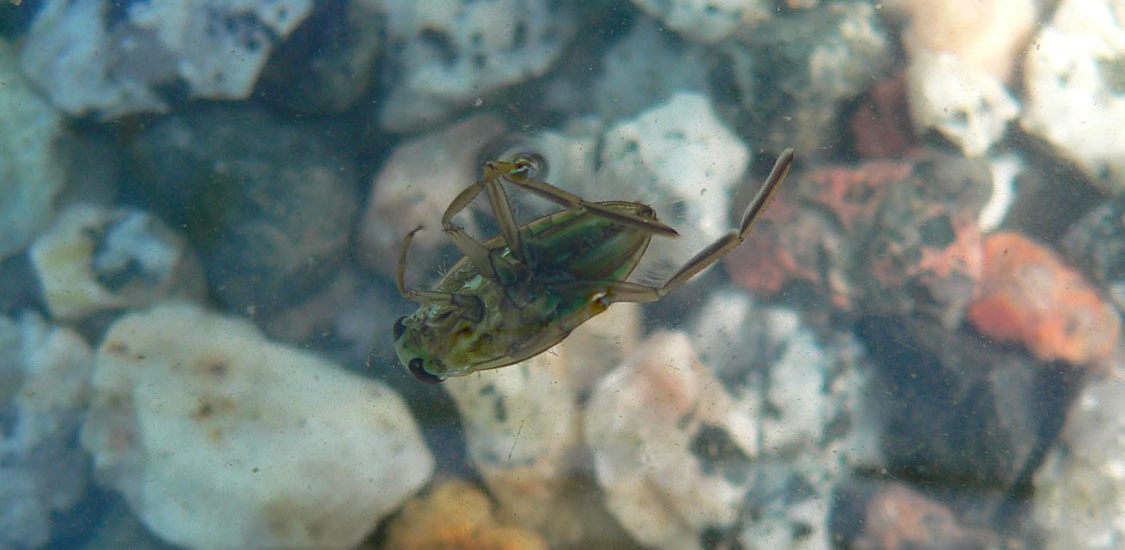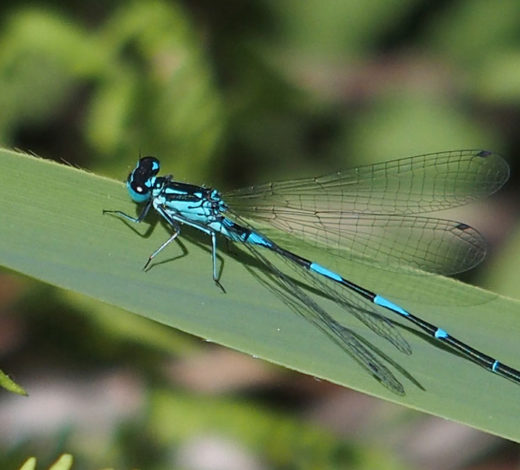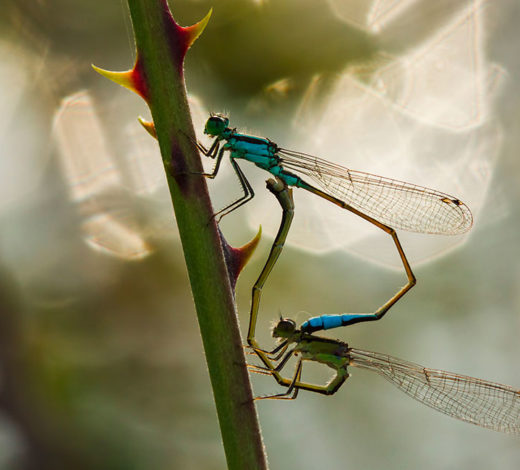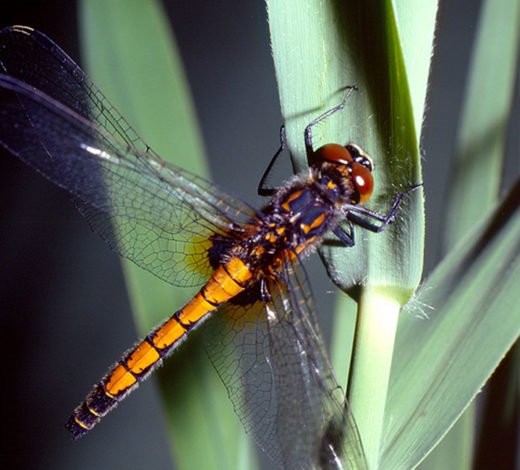Backswimmers
(Notonectidae)
Backswimmers are typically aquatic insects, even though they use the store of air that enwraps their bodies to breath, using their long rear legs as oars.
Distribution
A family with a cosmopolitan distribution.
Description
The abdomen has a lengthwise ventral hull edged with long water-repellent hairs. The structure forms two overall air chambers connected to the spiracles, which the insects use to breathe when underwater. The clearest ethological feature of backswimmers, although this is shared with other families of Notonectidae, is that they swim upside down, with their stomachs upwards. This unique behaviour gives rise to the name ‘backswimmers’. When swimming, they use their rear legs like oars, pushing with quick flicking movements to propel themselves. Their specific weight is lower than that of water, so they must anchor themselves to supports to remain underwater while swimming. They may migrate by flying from one aquatic site to another at night. They are voracious predators and mostly attack other Arthropods, including mosquito larvae, and sometimes, despite their modest size, even small aquatic vertebrates. If disturbed, they may occasionally bite people, inflicting painful stings. They deposit their eggs on the surfaces of aquatic plants, fixed into or simply glued onto the tissues.
Habitat
They colonize calm water.
Observation in the Torbiera Reserve
They are still rather common in the peat bogs.



